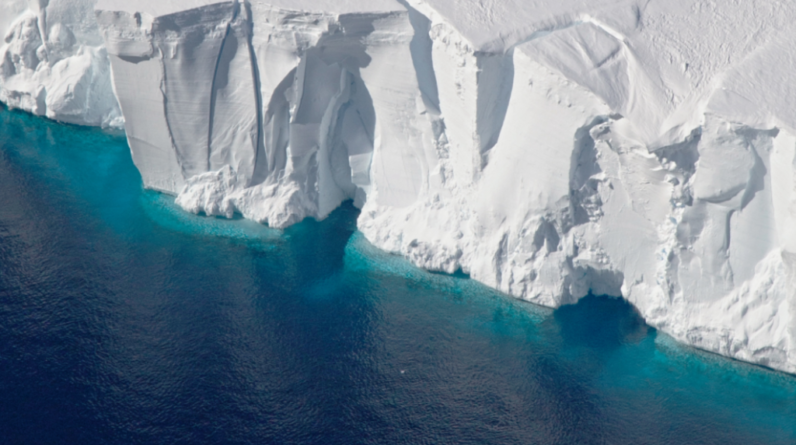
[ad_1]
Antarctica has 15 major ice shelves, most of them fed by glaciers growing slowly outward toward the open ocean.
Source – NASA Operation Ice Bridge photo. Climate.gov.
Researchers attempting to evaluate the mass of the floating ice shelves that line the Antarctic ice sheet may have overestimated their thickness.
Estimates of ice shelf mass loss are typically based on surface height measurements, However, getting an accurate estimation of their size is essential for calculating how their melt could contribute to sea level rise.
New research has found that previous attempts to estimate the thickness of the ice shelves actually overestimated their thickness by almost six percent on average, amounting to a difference of about 17 meters, according to CTV News Canada.
In a study published in the Journal of Glaciology in August, researchers from Ohio State University, in the first large-scale study of its kind, compared ice shelf thickness data from ice-penetrating radar measurements to thickness data estimated from contemporary surface elevation measurements.
“Because the Antarctic ice sheet is so big, a one percent misestimation in how fast it’s melting could mean inches or feet of sea level rise that we’re not accounting for,” Allison Chartrand, lead author of the study and a doctoral graduate of the Byrd Polar and Climate Research Center, told Ohio State News on Friday.
“So it’s really important to be as accurate as we can.”
According to Chartrand, she and her co-author, Ian Howat, a glaciologist and a Distinguished University Scholar in earth sciences at Ohio State, first began to investigate ice shelf thickness when examining basal channels – channels in which warmer ocean water melts grooves into the bottom of the ice shelf, accelerating mass loss – during a previous study.
After looking at vast datasets from 20 of the 300 ice shelf systems that surround about 75 percent of the Antarctic ice sheet, the researchers concluded that while prior assumptions about the ice shelves’ thickness were correct on a large scale, their accuracy varied greatly on a small scale, such as for individual structures like valleys or crevasses that are either too narrow or too small to be measured accurately.
Chartrand says ice shelves play a large role in stabilizing the Antarctic ice sheet and that a few inches of displaced ice shelf could cause thicker ice to flow into the ocean, resulting in several feet of loss to some coastlines.
“What this research really shows is that we need to be a lot more careful about the assumptions we make to estimate the ice shelf thickness, and about how we account for uncertainties and what they mean for the final result,” Chartrand said.
[ad_2]
Source link






